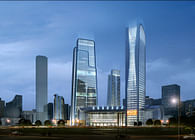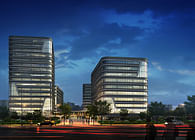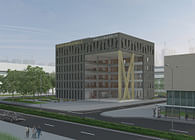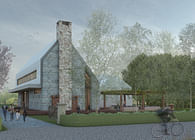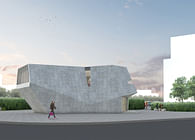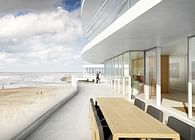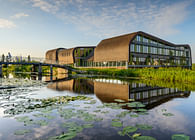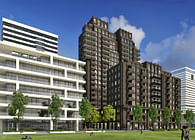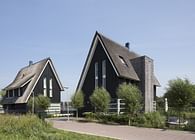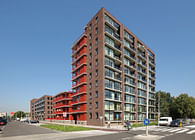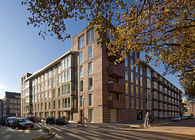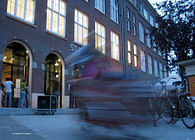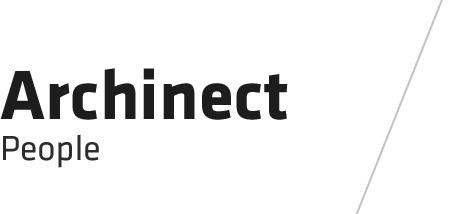
Kosovo aims to become an EU member state. Economical development of the region will benefit from expanding collaboration between EU nations. As their income will continue to gradually increase, people will have more opportunities to engage with culture and leisure. Gjilan is one of the larger cities in the south east of Kosovo, close to the Serbian and Macedonian border. Intensification of (cross-border) exchange results in growing traffic flows, as a result of increasing trade and tourism. These effects have also occurred in other eastern European nations that have previously become EU member states. Until now Gjilan has expanded mainly organically, along existing paths and negotiating geographical features, with little governmental interference. Today the city is challenged to grow through densification, with a guiding role for the city government. The urban tissue will gradually convert from a village typology towards an urban one.
Analysing the assignment for Europan 12 we have concluded that the following goals must be met:
- Developing a strategy that is able to incorporate the urban growth in terms of densification and sustainable growth
- Creating a representative urban space for public events, recreation, leisure, city festivities etc.
Strategic site
Gjilan’s common two-storey housing has resulted in large urban sprawl. To increase density and minimise further horizontal expansion, we have to incorporate the vertical element into the existing urban structure: stacked housing (apartments) with public plinths along boulevards, streets and a central pedestrian area. Vertical densification uses supporting networks (electricity, sewage, transportation) more efficiently. Sustainable growth takes time and is phased over 20-50-100 years. In our plan the urban structure is able to adjust through time. Diversification in block and plot sizes provides space for different building types. These low scale interventions develop in their own pace, following market demands. We support equal opportunities for both corporate urban developers and individual citizens to develop their own land and neighbourhood with an integrated connection to public services and existing infrastructure. Urban blocks with a clear alignment to the public realm enhance the city’s organisation while the inner courtyards can be used for communal purposes. Mixed urban areas without fixed architectural expression make neighbourhoods more lively and are less vulnerable to changing economic conditions. Public parks are well used and will be better connected through a series of public spaces.
Project site
Gjilan’s main institutions are located at its central square where main infrastructure axes and the river cross, providing a natural habitat for the city’s city hall and culture centre. Ring roads enhance efficient transit traffic: station, centres for commerce are easily accessible without pressuring the by-streets. A car-free green urban area provide a pleasant place for pedestrians. Large underground parking sustains accessibility of city centre. The public buildings have a legible architecture: they express their functions through organisation, elevation and materialisation.
We advocate adaptable phasing: the hotel and city hall can stay in business while their successors are built elsewhere on the square. Enclosement of the main square grants it the civic grandeur it is entitled to. The hotel on top of the shopping/leisure centre offers great views on the surroundings and marks the heart of the city. Neglected waterways are reclaimed for leisure purposes: the central river is upgraded from waste water backside to leisure boulevard frontside. The terraced design allows for seasonally fluctuating water levels.
Year: 2013
Client: Municipality of Gjilan
Size: 125.000 m2 (strategic site)
19.500 m (project site)
Status: Built
Location: Gjilan, CS
My Role: Project Architect
Additional Credits: Christian Rovers + Joop Tobben
